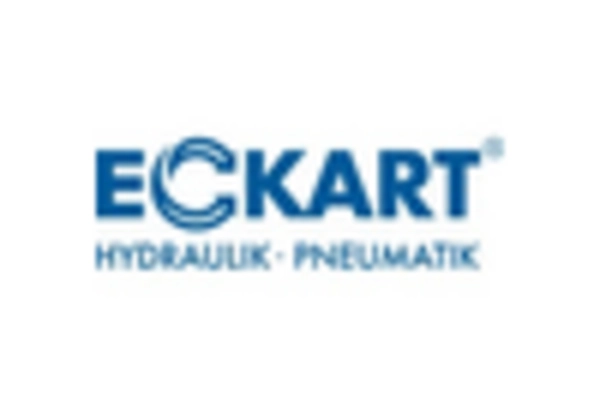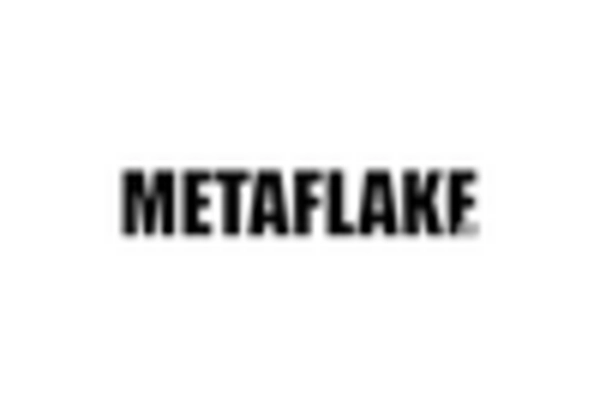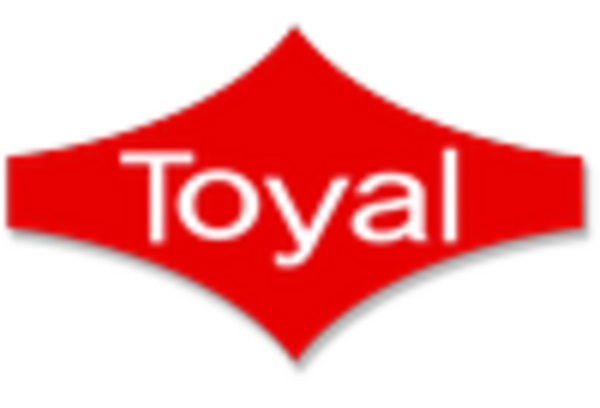Rising Demand in Automotive Sector
The automotive sector is experiencing a notable surge in demand for aluminum pigments, primarily due to their aesthetic appeal and lightweight properties. As manufacturers increasingly prioritize fuel efficiency and design innovation, the aluminum pigments market is likely to benefit significantly. In 2025, the automotive industry is projected to account for approximately 30% of the total demand for aluminum pigments in the US. This trend is driven by the growing adoption of aluminum in vehicle manufacturing, which enhances performance while reducing weight. Furthermore, the shift towards electric vehicles, which often utilize aluminum for battery casings and body structures, is expected to further bolster the aluminum pigments market. As a result, the automotive sector's expansion is a critical driver for the growth of the aluminum pigments market, indicating a robust future for this segment.
Expansion of Construction Activities
The construction industry in the US is witnessing a robust expansion, which is anticipated to significantly impact the aluminum pigments market. With an increasing focus on aesthetic appeal and durability in building materials, aluminum pigments are being utilized in various applications, including paints, coatings, and decorative finishes. In 2025, the construction sector is expected to represent around 25% of the aluminum pigments market. This growth is fueled by rising investments in infrastructure development and residential projects, as well as a growing trend towards sustainable building practices. The incorporation of aluminum pigments in construction materials not only enhances visual appeal but also improves longevity and resistance to environmental factors. Consequently, the expansion of construction activities serves as a vital driver for the aluminum pigments market, suggesting a promising outlook for manufacturers and suppliers.
Technological Innovations in Production
Technological innovations in the production of aluminum pigments are playing a crucial role in shaping the market landscape. Advances in manufacturing processes, such as the development of more efficient milling techniques and surface treatments, are enhancing the quality and performance of aluminum pigments. These innovations are expected to reduce production costs and improve product consistency, thereby attracting a broader range of applications. In 2025, it is anticipated that technological advancements will contribute to a 10% increase in the overall efficiency of aluminum pigments production. This improvement is likely to stimulate growth in various sectors, including automotive, construction, and consumer goods, as manufacturers seek high-quality pigments that meet evolving market demands. Thus, technological innovations represent a significant driver for the aluminum pigments market, suggesting a dynamic and competitive environment.
Increased Focus on Aesthetic Applications
The aluminum pigments market is experiencing a shift towards aesthetic applications, particularly in the cosmetics and personal care industries. As consumer preferences evolve, there is a growing demand for products that offer visual appeal, leading to an increased utilization of aluminum pigments in formulations. In 2025, the cosmetics sector is projected to account for approximately 15% of the aluminum pigments market in the US. This trend is driven by the rising popularity of metallic and shimmering effects in makeup products, which enhance consumer experience. Additionally, the use of aluminum pigments in packaging design is gaining traction, as brands seek to differentiate themselves in a competitive market. The increased focus on aesthetic applications is likely to propel the aluminum pigments market, indicating a shift in consumer behavior and preferences.
Regulatory Support for Sustainable Practices
Regulatory support for sustainable practices is emerging as a key driver for the aluminum pigments market. As environmental concerns gain prominence, regulatory bodies are implementing guidelines that encourage the use of eco-friendly materials in various industries. This shift is prompting manufacturers to adopt sustainable practices in the production of aluminum pigments, such as reducing waste and utilizing recycled materials. In 2025, it is estimated that approximately 20% of the aluminum pigments market will be influenced by regulations promoting sustainability. This regulatory landscape not only fosters innovation but also enhances the market's appeal to environmentally conscious consumers. Consequently, the alignment of the aluminum pigments market with sustainable practices is likely to drive growth, indicating a positive trajectory for manufacturers committed to eco-friendly solutions.

















Leave a Comment